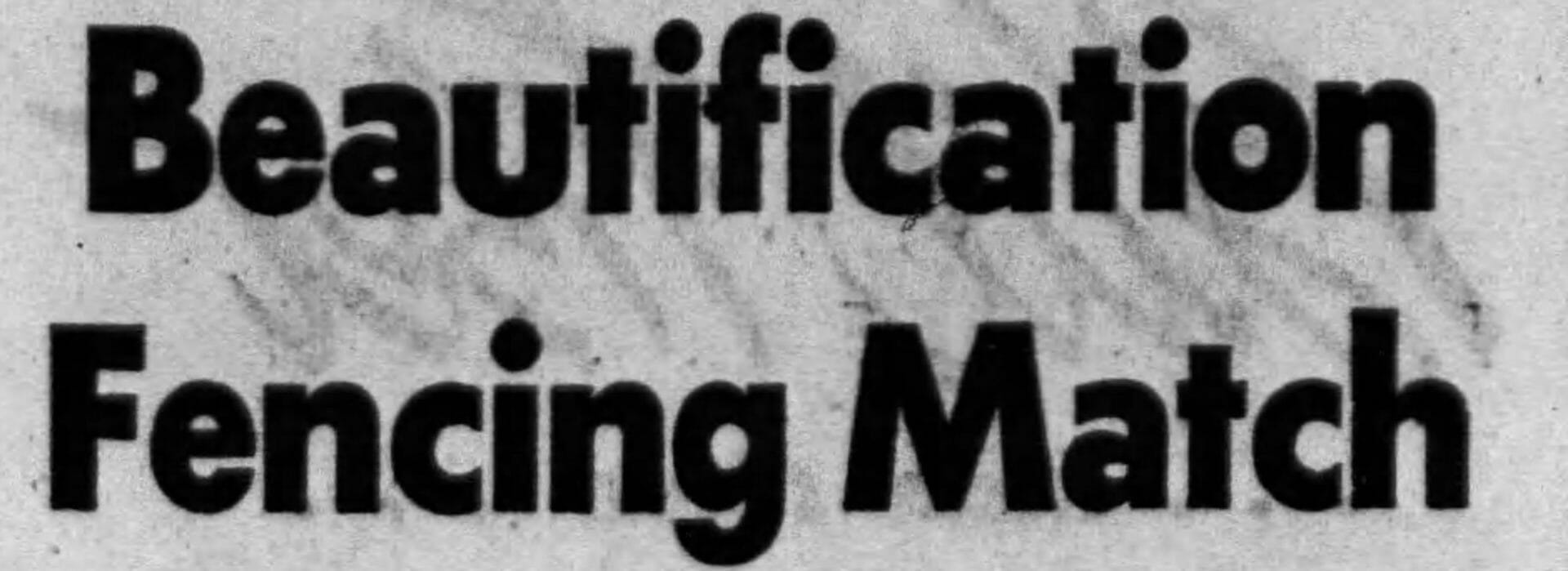The name Lockwood has been a part of Oakland for a long time. I am still looking into where the name came from. Lockwood was (is) considered a part of the Elmhurst District.
In 1875 the Lockwood School District reported the following:

The Site
The site of Lockwood Gardens was once the extensive estate of William Cluff Jr., a wholesale grocer of some prominence in the early days.
Lockwood Gardens is located between 64th and 66th Avenues on the south side of East 14th Street on 2 1/2 acres of land that was occupied by a golf practice range and one house.

Planning Stages
The proposed housing development that would become Lockwood Gardens was met with protest. The major complaints were as follows.

One of the provisions in the funding of government housing for the city was to carry out an “equilievant demolition” program. Under the provision for every new housing unit built, a substandard dwelling not within the project area must be demolished. The city had not met the requirements of the projects built in West Oakland. Lockwood was 372 housing units. Over 500 hundred homes would have to be demolished.


The cost of building the projects was about $1,175,525. Lockwood was ready for occupancy in 1942.

The Early Years
Lockwood opened in August of 1942. Originally designed for low-income families regardless of employment, they were converted for the use of families in the defense industry only.

“this metropolitan area’s answer to Govenment housing officials prayers”
Oakland Tribune 1944
In 1944 Lockwood had a population of 1600, which included 372 family units and a total of 800 children. An all-volunteer Community Council. A very active Improvement Club to promote unity among the residents and expand social and sports programs for adults and children.

There were two newspapers and two orchestras that provided music for the semi-monthly adult dances and the weekly teen dances. There was a community victory garden.

Organized girls’ and boys’ clubs and carried out a full program of social and sports activities under the direction of volunteers.
There was an auxiliary police force of 40 members who provided their own uniforms and served under Chief of Police James Rouse.

Race and Housing
In a letter to the editor of the Oakland Tribune, Mrs. Mollie Thorner wrote the following:
Editor: Only recently has our whole neighborhood become fully aware of the shocking policies at Lockwood Gardens Federal Housing Projects. (65th Avenue). The neighborhood surrounding Lockwood Gardens is a fine democratic community where all peoples, regardless of race, creed, or color, live side by side to enrich all. The policy of Lockwood Gardens, however, is No admittance to any minority groups. Please note that this is a Federal Housing Project for GI families of low income. All Americans are asked to fight on the battlefield, regardless of race, creed, or color. What do the good people of Oakland think of a policy where, if the GI lives to come home, he finds a Federal Project closed to him because of the color of his skin? These projects are partly paid for by the Federal. Government, but the policy is left in the hands of each city. And since one poison always breeds another, it has now been learned that hundreds of families live in Lockwood Gardens whose income is way above the maximum ser for Federal Housing tenants. We believe that the housing authorities shut their eyes to this to keep up the discrimination policy.
We say with great pride that now that our community did at last found all these things out it will leave no stone unturned to have these policies changed. The citizens of all of Oakland have a duty in this.
Neighborhood Tenants Committees
Mrs. Mollie Thorner, Secretary

The Later Years



Even Later
Lockwood is also known as the “6-5 Vill” (Village) and is one-half of the “Vill.” The other half of the “Vill” is the recently torn down 69th San Antonio Villas housing project, where infamous drug kingpin Felix Mitchell is from. The 69th San Antonio Villas has since been remodeled into condominiums. Once an extremely unattractive housing project, the Oakland housing authority also remodeled Lockwood Gardens. However, unlike the 69th Vill, whose crime rate dropped after remodeling, these efforts have done little to thwart the crime that still plagues the 65th Vill.
Rappers such as G-Stack, Tuffy, Yukmouth, and the late Rap-A-Lot Records artist Seagram Miller all claim The Vill home. World Heritage Encyclopedia
Demolish or Rehabilitation
The Oakland Housing Authority received five federal HOPE VI grants totaling $83 million, enabling it to revitalize four large public housing sites and four small scattered sites. OHA’s first HOPE grant was used to renovate one of OHA’s original “war housing” developments, the 372-unit Lockwood Gardens, constructed in 1943. This was in 1994, 1998, 1999 and 2000
Lockwood Gardens was rehabilitated in the early 2000s.


More Info:
- Bids Announced – Lockwood Gardens – Oakland Tribune May 1941
- Lockwood Ready to Open – Oakland Tribune Jan 20, 1942
- Housing Projects for War Workers – Oakland Tribune Sep 27, 1942
- Housing Area Carries Out a New Plan – Oakland Tribune Feb 03, 1944
- Race and Housing – Oakland Tribune Jan 15, 1951
- Their Work is Child’s Play – Oakland Tribune Jul 16, 1968
- Feinstein Hears Pleas for Resources – Sf Examiner Feb 12, 1993
- Oakland, Richmond to Demolish Public-Housing Projects – SF Gate Jul 2000
.
- Lockwood Gardens – Oakland Housing Authority
- Mass Evictions from Oakland’s Public Housing – Wiki News May 2006
- Love Among the Missing: One Oakland Women’s Story – KQED












